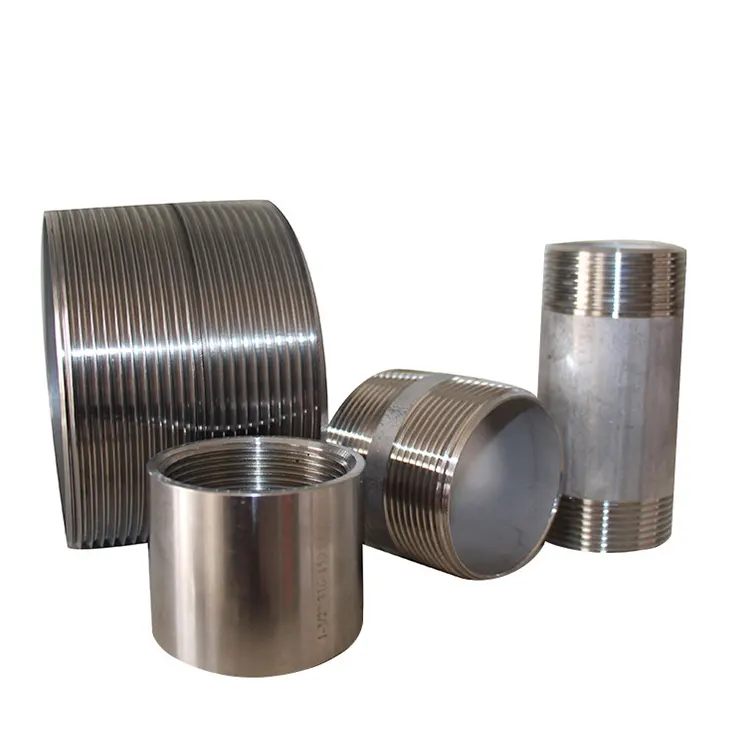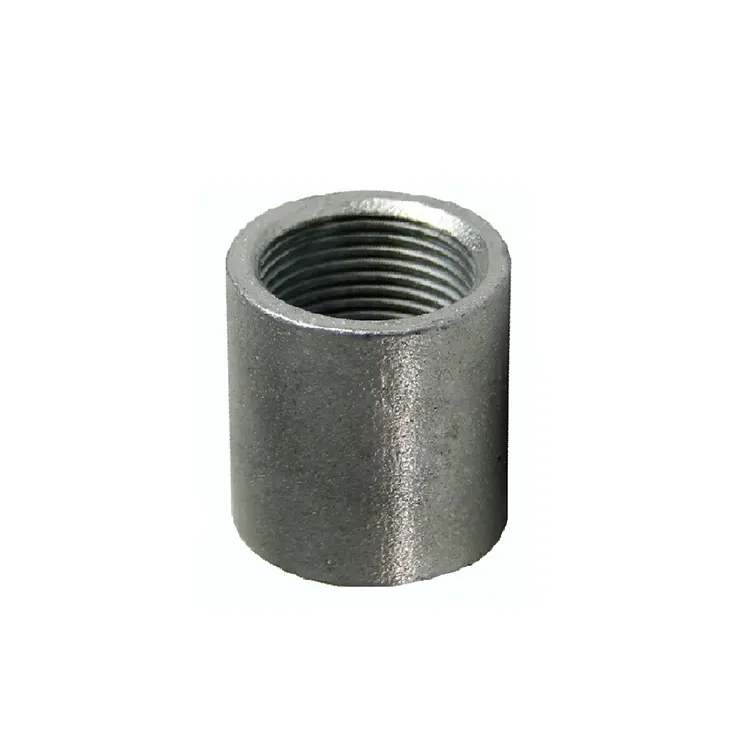Product Description
Specification
|
Product name |
Stainless Steel Repair Coupling for Pipe fittings |
|
Material |
Stainless steel, cast iron |
|
Size |
1.0″-6.6″ |
|
Application |
Pipeline of Water, Oil, Gas, Ship Building |
|
Sealing sleeve |
EPDM, NBR, MVQ, FPM/FKM |
|
Packing |
Carton , pallets |
Features :
* used for both pipe connection and pipe leakage repair
* allow angular deflection
* anti corrosive
* easy installation and dismantle
| Lug | SS304/316 |
| Bolts | SS304/316 |
| Gasket | EPDM / NBR |
| Shell | SS304/316 |
| Grip teeth | SS304/316 |
| Application | HDPE Pipe Connection / Leakage Repairing |
Packing & Delivery
Plastic film,Wooden case,Pallet, Bags and cartons or as clients’ requirements inner
/* January 22, 2571 19:08:37 */!function(){function s(e,r){var a,o={};try{e&&e.split(“,”).forEach(function(e,t){e&&(a=e.match(/(.*?):(.*)$/))&&1
How do Temperature and Environmental Conditions Affect Half Coupling Performance?
The performance of half couplings can be significantly influenced by temperature and environmental conditions. These factors can affect the materials, integrity, and overall functionality of the coupling in various ways. Here’s how temperature and environmental conditions impact half coupling performance:
- Temperature: Extreme temperatures, whether high or low, can affect the properties of the coupling material. For instance, at high temperatures, certain materials may experience reduced strength and increased susceptibility to creep or deformation. On the other hand, low temperatures can make some materials brittle and prone to cracking. It is essential to select half couplings made from materials that can withstand the expected temperature range in the application.
- Corrosive Environments: Half couplings used in corrosive environments are exposed to chemical agents that can cause material degradation. Corrosion can weaken the coupling’s structure and lead to leaks. In such cases, using corrosion-resistant materials, coatings, or liners can be beneficial to maintain coupling performance and longevity.
- Humidity and Moisture: Excessive humidity and moisture can accelerate corrosion and contribute to the deterioration of the coupling over time. Regular cleaning and protection against moisture ingress are necessary to ensure optimal performance in damp environments.
- Abrasive Particles: In industrial settings with abrasive particles present in the fluid or environment, half couplings may experience wear and erosion. This can lead to surface damage and affect the coupling’s sealing ability. Selecting materials with high wear resistance and using filters or strainers to remove abrasive particles can help mitigate these effects.
- UV Radiation: In outdoor applications exposed to sunlight, UV radiation can degrade certain materials, particularly polymers and elastomers. Couplings made from UV-resistant materials or employing protective coatings can help counteract this effect.
- Thermal Expansion: Temperature fluctuations cause thermal expansion and contraction of the pipes and the half couplings. In systems where thermal expansion is not adequately accommodated, stress on the couplings can lead to leaks or joint failure over time. Providing expansion joints or using materials with low thermal expansion coefficients can address this issue.
- Altitude: At higher altitudes, air pressure is reduced, which can affect system performance, especially if the half couplings are not designed for such conditions. It is essential to consider altitude-related effects on pressure and temperature when selecting the appropriate coupling materials.
- Weather and Climate: Half couplings installed outdoors are exposed to weather conditions like rain, snow, hail, and extreme temperatures. These factors can impact the coupling’s integrity and performance. Regular maintenance and inspections become crucial to identify and address any weather-related damages.
To ensure optimal half coupling performance, it is essential to consider the specific temperature and environmental conditions of the application. Choosing suitable materials, applying protective coatings, and implementing proper maintenance practices are essential steps to enhance the longevity and reliability of half couplings in various operating environments.
Can a Half Coupling be Used in both Residential and Industrial Applications?
Yes, a half coupling can be used in both residential and industrial applications, depending on the specific requirements of the plumbing or piping system. Half couplings are versatile fittings that find application in various settings due to their design and functionality.
Residential Applications: In residential plumbing systems, half couplings can be utilized for several purposes. They are commonly used in household plumbing repairs and installations where a secure connection between pipes or components is needed. For example, half couplings can be used to attach fixtures such as faucets, showerheads, or water heaters to the water supply lines. Additionally, they are employed in various DIY projects and renovations around the house, providing a reliable and leak-resistant connection between pipes of different sizes or materials.
Industrial Applications: Half couplings are extensively used in industrial applications due to their ability to connect pipes and components in a range of systems. In industrial settings, half couplings are employed in piping systems for water, air, chemicals, gases, and other fluids. They are commonly found in power plants, chemical processing plants, refineries, petrochemical facilities, and manufacturing plants, among others. These couplings play a crucial role in creating reliable joints for conveying materials and maintaining the overall integrity of the industrial processes.
While half couplings are suitable for both residential and industrial applications, there are certain considerations to keep in mind. For residential use, the materials and pressure ratings of the half couplings should be appropriate for household water supply systems, which generally operate at lower pressures compared to industrial systems. In industrial applications, the materials, dimensions, and pressure ratings of the half couplings must meet the specific requirements of the industrial processes, which often involve higher pressures and harsher environmental conditions.
Regardless of the application, it is essential to select high-quality half couplings that comply with relevant industry standards and are appropriate for the intended use. Proper installation and maintenance of the couplings are also crucial to ensure a leak-free and reliable connection in both residential and industrial settings.
What are the Standard Sizes and Dimensions Available for Half Couplings?
Half couplings, as pipe fittings used in piping and plumbing systems, are available in various standard sizes and dimensions to accommodate different pipe sizes and applications. The sizes and dimensions of half couplings depend on the pipe’s nominal diameter and the specifications set by industry standards organizations. Some common standard sizes and dimensions for half couplings are as follows:
- Thread Sizes: Half couplings come with different thread sizes to match the corresponding pipe threads. Common thread sizes for half couplings include 1/8″, 1/4″, 3/8″, 1/2″, 3/4″, 1″, 1-1/4″, 1-1/2″, 2″, 2-1/2″, 3″, 4″, 5″, 6″, and larger.
- Length: The length of a half coupling refers to the distance from one end to the other. It is typically a few inches, depending on the pipe size and application requirements. Lengths for half couplings can range from around 1 inch to 12 inches or more.
- Outer Diameter (OD): The outer diameter of a half coupling refers to the measurement across the widest point of the coupling’s external surface. It corresponds to the pipe’s outer diameter it is intended to connect to. Common OD sizes for half couplings include 1.05″, 1.32″, 1.66″, 1.90″, 2.38″, 2.88″, 3.50″, 4.50″, 5.56″, 6.63″, 8.63″, and others.
- Materials: Half couplings are available in various materials, as mentioned in the previous answer. The material selection depends on factors such as the type of fluid being transported, the temperature, the pressure, and the corrosion resistance requirements.
It is essential to refer to industry standards, such as ANSI (American National Standards Institute), ASME (American Society of Mechanical Engineers), or ASTM (American Society for Testing and Materials), to ensure that the half couplings meet the specific dimensional and material requirements of the application.
When selecting a half coupling, it is crucial to consider the following factors:
- Pipe Size Compatibility: Ensure that the half coupling’s thread size matches the pipe’s thread size to create a secure and leak-proof connection.
- Application Requirements: Consider the operating conditions, including pressure, temperature, and the nature of the fluid being transported, to choose the appropriate material and dimensions for the half coupling.
- Standards Compliance: Select half couplings that meet industry standards to ensure safety and compatibility with other components in the system.
In summary, half couplings are available in various standard sizes and dimensions, with different thread sizes and materials to accommodate diverse pipe sizes and applications. Proper selection based on the specific requirements of the piping or plumbing system is essential for ensuring a reliable and efficient connection between pipes.
editor by CX 2024-03-13




